|
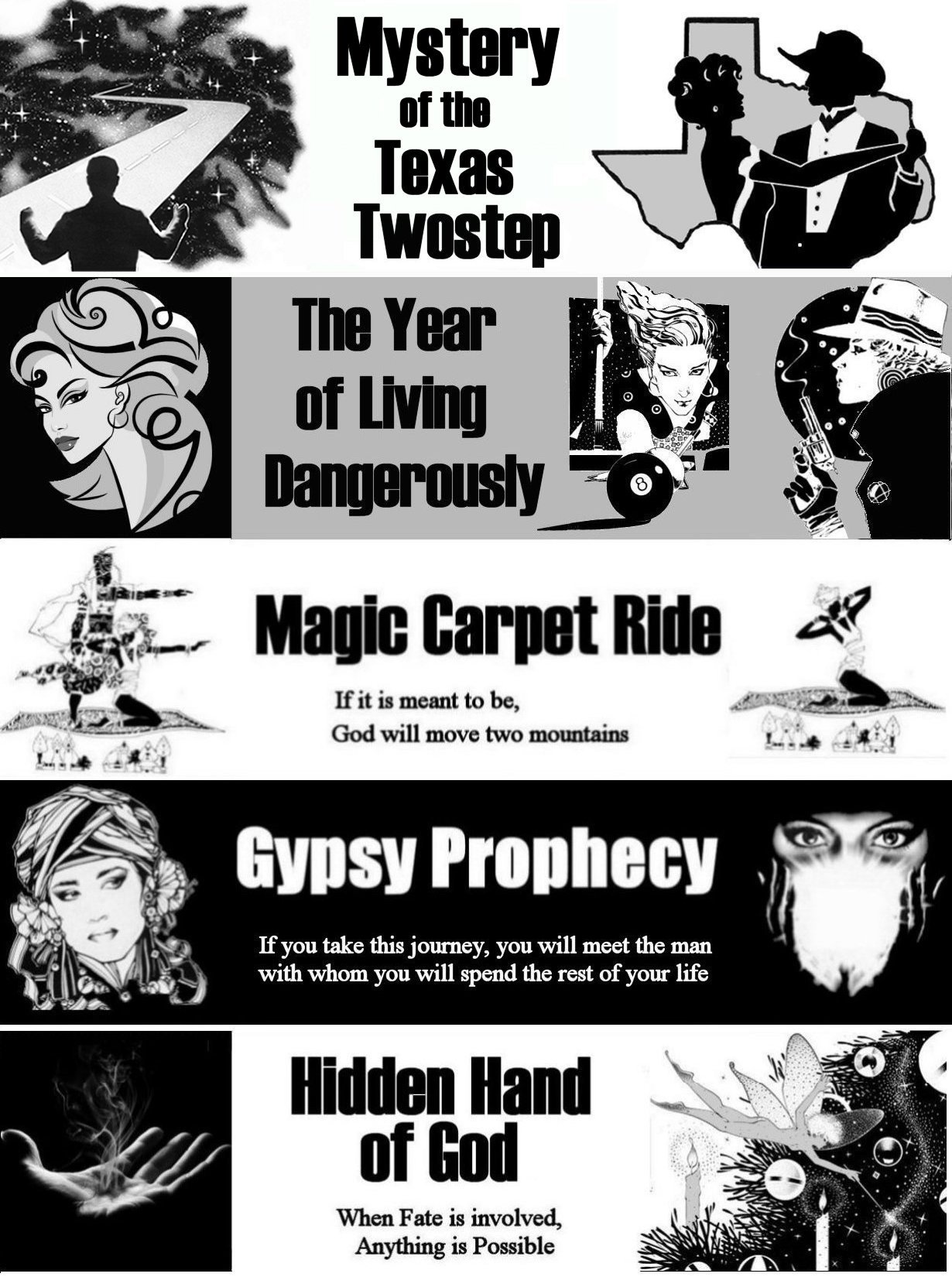
|
MYSTERY OF THE
TEXAS TWOSTEP
CHAPTER FIFTEEN:
REDEMPTION
Written by Rick
Archer
|
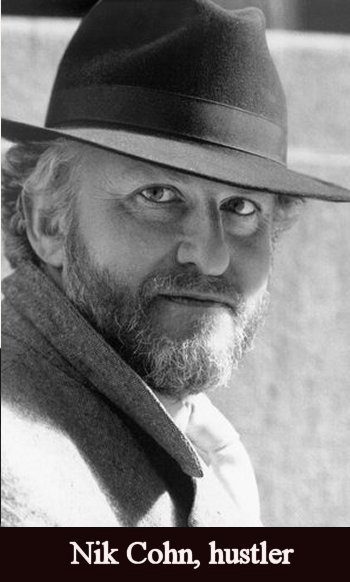 |
Rick Archer's Note:
One of my
favorite stories about Saturday Night Fever
was the L.A. premiere party on December 7, 1977.
Faces in the crowd included celebrities
such as Farrah Fawcett, Jim Brown, Chevy Chase, Michael York, Kristy McNichol, Carly Simon, John Travolta, Robert Stigwood,
plus the cast
from the movie.
Nik Cohn was there
too. He was accompanied by his date, the glamorous Yvonne Elliman. Ms. Elliman
had a Number One hit on the soundtrack titled "If
I Can't Have You." Things like this
happen when it is your Brightest Day.
Sitting at home
that night was Clay Felker. He was
not invited to the premiere. Why not?
Because he did not have a single thing to do with
the movie. Felker was not in a good mood.
For one thing, he was unemployed. In addition, Felker was astonished at
the enormous success of Stigwood's movie.
Stunned to find this unknown,
lightly-publicized movie turn into something
special, Felker's mood grew worse.
Nik Cohn.
Half a million. Date with Yvonne Elliman.
Robert Stigwood, fame, fortune and
national
acclaim. That's Hollywood, baby.
Meanwhile Clay Felker was
an unemployed has-been who had somehow missed the
chance to take credit
for the event of the decade.
|
 |
I can imagine Felker feeling humiliated by
the overwhelming success of Saturday
Night Fever.
Disco was the cultural phenomenon that
defined the Seventies. Seething with
anger at missing out on the gravy train
during his Darkest Hour, I have to believe
Clay Felker became obsessed with getting the
chance to set things right. Given that
Rupert Murdoch was a powerful man, there
probably was not much Felker could do to
even the score. However Cohn and
Stigwood were a different story.
More than likely, Clay Felker wanted
Redemption.
It was Felker's mistake to print the fake
story in
New York magazine that launched
Cohn's joyride to Destiny. Given that
Felker never made a dime, I would imagine he
felt badly used.
As for
Robert
Stigwood, the man with the Midas Touch, I do
not know if Felker had animosity towards
him. However, I can imagine Felker
experienced tremendous envy. I also
can imagine Felker's competitive instinct
kicked in. Okay, so Stigwood got rich
off his mistake. Good for him.
Now it was Felker's turn to get rich off
Stigwood. Not only did he know how to
do it, he had the power to pull it off.
Let's make
a Sequel.
|
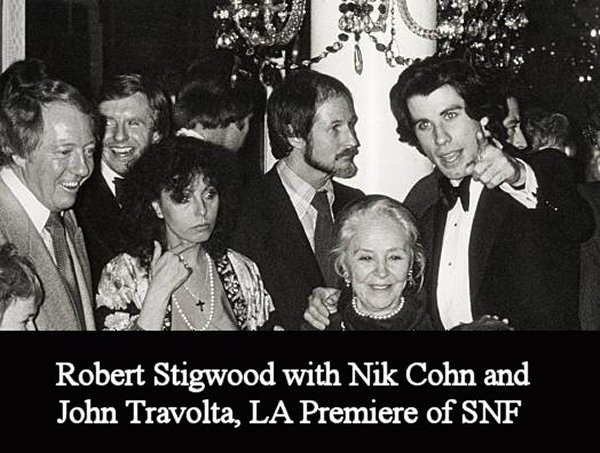 |
|
Once upon a
time Movies ruled the land. Movies were once
the third largest industry in the country. The
average American saw four movies a month. Then
came television. Uh oh. Now the average
American saw four movies a year. This made the
business of making movies much riskier. The
cost of a mistake was astronomical. There was
so little room for failure that one bad movie could
cost a producer or a star their career.
Unfortunately
it isn't that easy to predict winners and losers.
So 'Sequel' became the movie
industry's favorite word. Sequels are
important because there is a built-in loyal audience.
The countless James Bond films are a perfect example. Sequels are the safest bet in
Hollywood, especially if the star is willing to
return. For example, John
Travolta's dance legacy was a type of Sequel similar
to the tradition of the Fred Astaire movies.
Grease was the Broadway musical that
accidentally
led to Saturday Night Fever. Robert Stigwood was an avowed
fan of musicals.
Stigwood was so convinced
Grease would be a movie hit that he
quickly got the rights to it. Next came
Stigwood's epiphany that John Travolta was born to
play Grease. However, the
moment Travolta was signed, Stigwood got the bad
news. The Grease project had been
delayed. Uh oh. Then someone handed Stigwood the
script to Saturday Night Fever.
Bad luck turned into good luck.
Or should we say
'Dumb Luck'? When you are having your
Brightest Day, you can do no wrong. Even your
mistakes turn into a pot of gold.
|
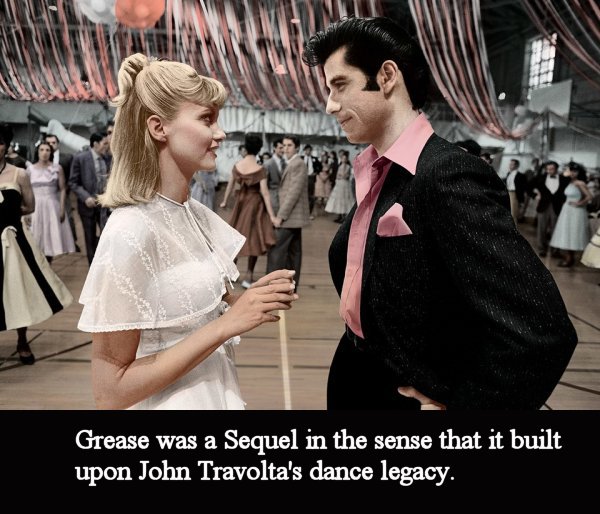 |
1977 had been a tough year for Clay Felker. First he
had been outsmarted by Nik Cohn. Then he had
been outfoxed by Rupert Murdoch. Adding to his pain, Felker's beloved
magazine had been ripped out of his hands.
Heart-broken, devastated,
out
of a job and out of luck, Felker was forced to watch
helplessly as Robert Stigwood got obscenely lucky thanks in
large part to Felker's negligence. In slang, 'one up'
means to gain an advantage or superiority over someone,
often by doing something slightly better or more impressive.
It's a way of trying to outdo or outshine another person. Robert Stigwood did not directly exploit Clay Felker, so
it is unlikely there was a personal grudge. But
there had to be a giant blow to his pride to see Stigwood
soar at the same time that Felker was falling.
My guess is Felker began looking for a way to 'one-up'
Stigwood.
The thing to
understand is that Clay Felker was not helpless. Yes,
he
had been guilty of complacency, but after taking time to
grieve, now he had his game face back on.
Felker was not Rupert Murdoch-rich, but he was reasonably
wealthy in his own right. So the first thing Felker
did on the comeback trail was purchase Esquire
magazine in August 1977, then install himself as editor. This would turn out to be a
shrewd move.
With Step One
completed,
next in his
gun sights were Nik Cohn and Robert Stigwood, the men
who had humiliated him. Felker's
idea was to beat them at their own game.
Felker realized that
Saturday Night Fever was
just begging for a sequel. Still smarting after
seeing the Nik Cohn story turn into the event of the decade, Felker became obsessed with
finding his own sequel to Saturday
Night Fever before Stigwood did it himself.
Unfortunately, this was a tricky proposition. How do
you steal a Sequel? Good question. Stigwood
owned the legal rights to Saturday Night Fever.
No doubt Felker would be sued to oblivion if he tampered
with Stigwood's invaluable property. Felker decided his only choice was to
make a 'Disguised Sequel'. Easier said than
done.
How does someone make a Sequel that isn't a
Sequel and persuade everyone into believing it is a legitimate
Sequel?
Looking for
the answer to that question became Felker's
burning obsession.
Felker knew if he could find the right vehicle, he had the contacts and
the skill to
pull it off. After all, Felker had just as many
show business contacts as Stigwood. In addition,
Felker knew the Saturday Night Fever formula
by heart. Now that he was unemployed thanks to
Murdoch, Felker had the time and opportunity to watch
Stigwood in action during the filming in Brooklyn.
Indeed,
Felker occupied a catbird seat which allowed him to
study every move Stigwood made. Fortunately, finding gold
nuggets
in obscure locations was Felker's greatest skill. If the master trend spotter
could track down something similar to the
Disco story, Felker was certain he could emulate Stigwood's success.
After
taking control of Esquire in 1977, Felker began his search.
Felker knew whatever he was looking for would need to include dancing.
Did anyone know what he was up to? Perhaps
his wife Gail Sheehy and a few close friends, but Felker had
learned his lesson the hard way... Keep your mouth shut!!!
No more handing the farm to people like Cohn, Stigwood and Murdoch.
|
So why the need for silence? If Stigwood had the slightest idea what he was up to, the
game would be over. Felker smartly kept his cards
close lest this opportunity slip away. Even so,
Felker was not terribly optimistic.
Racing to beat Stigwood to the coveted Sequel,
Felker knew his secret plan was a long shot at best.
The thing about Darkest Day is that one's Brightest Day may
be right around the corner. Just remember to be
patient. The craziest thing happened. Indeed,
just as Felker's Brightest Day was about to begin, Robert
Stigwood's Darkest Day kicked in. Instead of filming
Saturday Night Fever II like he should have,
Stigwood proceeded to make one of the worst movies in
cinematic history.
Sgt.
Pepper's Lonely Hearts Club Band was a 1978 musical
mishmash starring the Bee Gees and pop singer Peter Frampton.
The Bee Gees had reached mega-stardom. They
sold millions of records, had their faces plastered on
countless
magazine covers and played sold-out concerts to venues
across the globe. Casting the Bee
Gees and Frampton as stars of the movie seemed like
a sure winner. What better way to sell
billions of records?
Unfortunately
the movie was so awful it became a
laughing stock. A glance at
the reviews gives a clear picture.
•
"the film is
humorless"
•
"a film with a
dangerous resemblance to wallpaper"
•
"ranges from barely
tolerable to embarrassing"
•
"it just doesn't
work"
•
"quite possibly the
silliest movie ever conceived"
•
"mind-bogglingly
awful"
|
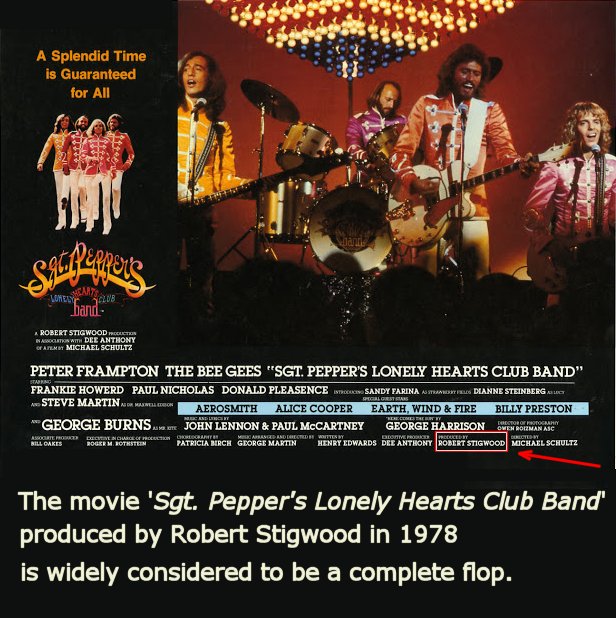 |
When asked about
the film in a 1979 interview, George Harrison expressed
sympathy for Stigwood, Frampton and the Bee Gees.
He acknowledged they all worked hard on Sgt. Pepper
only to see their efforts bomb miserably. Harrison went on to
say of
Frampton and the Bee Gees:
"I think it damaged their
images and their careers, and they didn't need to do that.
It's just like the Beatles trying to imitate the Rolling
Stones. The Rolling Stones can do it better.
Now that I think about it, I don't think me
and my mates could have saved this movie if we did
it ourselves."
As they say, "Talent
and intelligence will not inoculate anyone against the
Caprice of the Fates."
Robert Stigwood, previously considered a genius, had
stumbled badly. That's what happens when it is your Darkest
Day.
Stigwood's mistake left the door open for Clay Felker to
make his move.
|
Given
an unexpected reprieve
by Stigwood, Felker scoured the land for some sort of idea.
Locating the right opportunity was not as easy as he had
hoped. It took Felker almost a year to
find what he wanted. In June 1978 Felker was invited
to Houston to give a Journalism speech at a Rice University
symposium.
As the plane touched down, Felker was feeling dejected. Ever since the debut of
SNF in December 1977, Felker had spent the past six months scouring the land for a
solution to his 'Sequel' problem without success.
The clock was ticking and so far nothing had caught his eye.
Visiting Houston's airport made Felker's bad mood worse.
Now that
Saturday Night Fever was the
reigning talk
of the land, every mention of the Disco Inferno raging
through America reminded Felker of his shame. As
he
walked through the terminal, Felker was surrounded by a
neverending stream of Disco merchandise in every shop
he
passed. No doubt Felker
cringed each time he saw a picture of smiling Superstar John Travolta to remind
him of his oversight. Wouldn't it be nice if he could
produce a Travolta movie of his own? Then he would be the one
to sell airport merchandise. Gritting his teeth, Felker vowed to find a way to even the score or go nuts
trying. Little did he suspect his dream was about to come
true that very night.
|
Felker was met at the airport by Bill Broyles,
editor of Texas Monthly magazine,
and Mike Levy, the publisher. They were sponsors of the media event
being
held at the Rice University School of Journalism.
First the men took Felker to dinner. Then Levy
and Broyles asked him what he wanted to
do next. It was a Friday night, 10 pm.
Would Felker like to go back to the hotel?
Felker shook
his head, adding that he had never visited Houston
before. Would the men mind showing him around the city?
Broyles and Levy were more than happy to oblige.
As the men got into Levy's car, Broyles suggested they visit élan,
Houston's fanciest Disco. élan was just blocks away from
Felker's Galleria hotel.
Visit a Disco? Felker nearly vomited.
That was the last place he wanted to go. After
Felker said he could not stand Disco, Levy decided to give
Felker a different look at Texas-style nightlife. On
impulse, the men
drove Felker to the wild and wooly Gilley’s, a
giant beer hall in
neighboring Pasadena.
The moment Felker walked in the door, his
eyes grew wide as saucers. This vast honky-tonk
featured a country band, country dancing, a mechanical bull,
punching bags, pool tables, and scores of hungry cowboys on
the prowl for pretty cowgirls.
This was it! The moment Felker saw dozens of
couples dancing to western music, the tumblers fell into
place. Felker had just found what he was looking
for. Felker's instincts said Gilley's was the
honky-tonk equivalent of
the Disco featured in Saturday Night Fever.
Clay Felker had just hit the Jackpot.
|
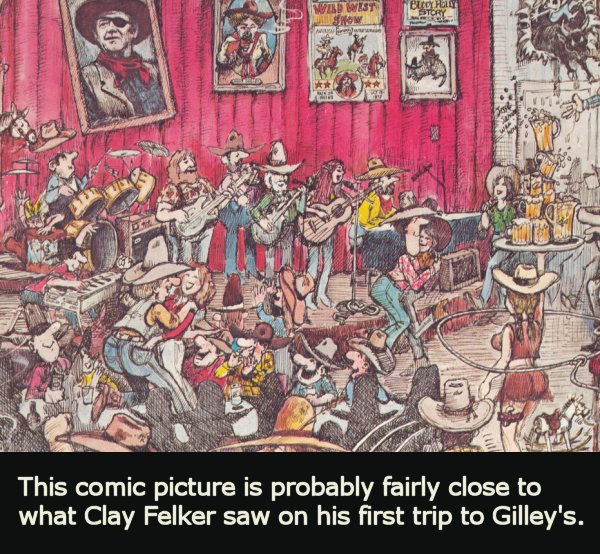 |
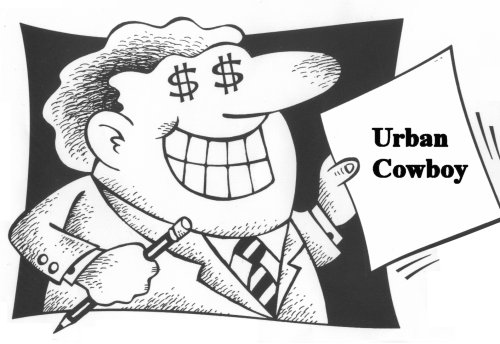 |
Previously Nik
Cohn had been in the right place at the right time.
Now it was Clay Felker's turn. Gilley's
promised to give Felker the second chance he prayed for.
Give the man some credit. Right now four thousand
people were participating in what had to be the most alien
environment imaginable to Felker's elitist Eastern
sensibilities. It took some genuine creativity to see the next 'Saturday Night Fever'
amidst this beer-fueled honky-tonk madness.
Fortunately, Felker was not put off by the
strange sight. Not at all. Felker's vision was
filtered through a rose-colored lens known as dollar
signs. Felker smiled. He had missed on Disco, but he
would not miss on Western. Clay Felker was back in the Game.
Here is what I like about this story. How many
people have the ability to see a run-down,
hot, smelly beer hall
like Gilley's and visualize the second coming of Xanadu? Don't ask me
how he did it, but
Felker threw Ugly
into his spin machine and made Badass
come out Beautiful.
Felker was about to
singlehandedly create a
nation-wide Country-Western Trend out of THIN AIR based on
perhaps the nastiest, raunchiest honky-tonk on earth.
|
Urban Cowboy at 35
--
John Spong, Texas Monthly, June 2015
Aaron Latham,
writer of the Urban Cowboy article:
Texas Monthly
asked Clay what he needed for an honorarium.
Clay said he didn’t want one. All he wanted
was a tour of Houston by night.
William Broyles Jr,
editor of Texas Monthly:
I took Clay
to Gilley’s. I’d hung out there multiple
times. It was so much a part of the world I
came from
that I didn’t see it as a story, whereas Clay saw these
people coming in from the country with their cowboy
cultural map still fresh in their head. That’s why we drive
pickups in River Oaks, right? So we walk through acres
of parking lot, past a fistfight or two, and as we got
closer, we could hear the sound of it.
Once we got
inside, it assaulted us: people hitting the punching
bag, two-stepping to the house band, hundreds of
drunks at the bar
and a herd of cowboys gathered over
at the mechanical bull.
Clay was in
his New York suit and handmade English shoes
trying to make sense of it all.
I could
see Clay's eyes get really wide.
I thought, “This is
great, glad he's having a good time.”
I had no idea that Felker was in the midst of his
grand Urban Cowboy epiphany.
Aaron Latham:
When Clay saw the bull,
the
punching bag, and four thousand
people dressed up like cowboys,
he could hardly contain his excitement.
He had finally found what he was looking for. Clay
deliberately hid his
excitement from the Texas Monthly
people. Then at three
o’clock in the morning, my phone rang in Washington.
Clay told me to get on the next plane to Houston. I was
there the next night.
|
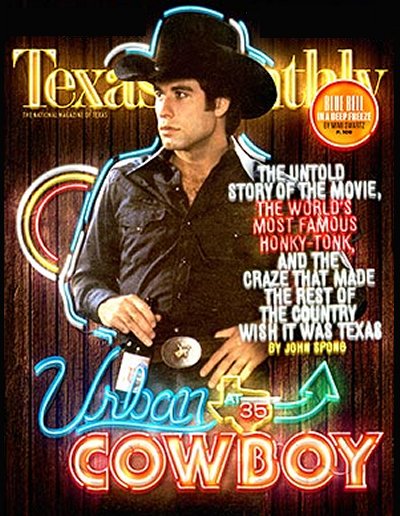 |
|
Looking for Love: The Urban Cowboy
Rides Again
-- written by Gregory Curtis, Texas Monthly, Nov.
1998
Gregory Curtis:
Clay Felker
was the editor of Esquire. Our publisher Mike Levy and
Bill Broyles, my
predecessor as editor, invited Felker to Houston
that summer to speak at the Rice University Publishing
Program. Instead of an honorarium, Felker wanted to be shown
around the famous boomtown. So they ended up at Gilley’s
late one night.
Felker saw the mechanical bull and the cowboys dancing with
a beer bottle in their back pocket and their girlfriend’s
thumbs hooked in their belt loops. He was so struck by the
place that back in his hotel room late that night, he called
writer Aaron Latham. Latham had been born and raised
in Spur, Texas, but was living in Washington, D.C. Felker told him to get out of bed and catch the first
airplane to Houston. The rest is history.
At
Texas Monthly, we had discussed writing about
Gilley’s
but hadn’t done it yet. One of the aggravations of journalism is
that you can be so familiar with something that you miss a
story that is right in front of your face. That was what we
did with Gilley’s.
Felker saw it and we didn't.
|
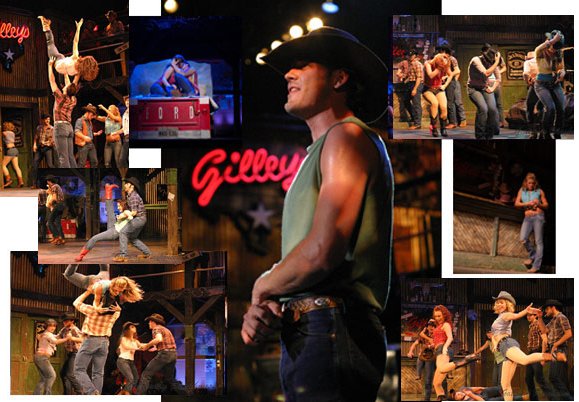 |
"If
a pickpocket were to see a Saint, he would only notice the
man's pockets."
If I visited Gilley's,
all I would see would be the mechanical bull, beer bottles
galore, drunken cowboys, lame dancing and ubiquitous brawling. Clay
Felker was said to have a gift for spotting things others
missed. Give Felker some credit. His instant recognition of Gilley's
as a substitute for the Brooklyn Disco club that inspired
SNF was the perfect example.
On the drive back to his hotel, Felker said nothing to
Broyles and Levy about his vision for fear his Texas
Monthly friends might spill the beans. Now that he
had found his pot of gold, Felker understood that stealth
was mandatory.
Apparently this search had been on Felker's mind for a long
time. I base this conclusion on the fact that Felker
instigated his plan the moment he returned to his Houston
hotel that night.
Preparing to beat Robert Stigwood to the punch, Felker
wasted no time. Minutes after
entering his room, Felker called his writer
friend Aaron Latham
at 3 am.
|
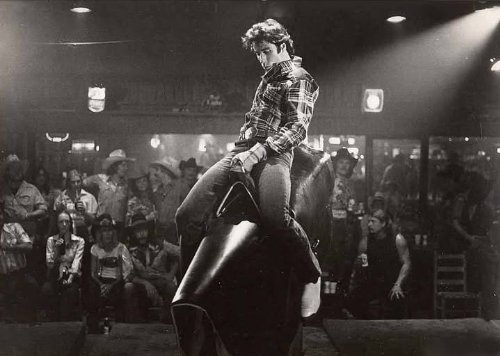 |
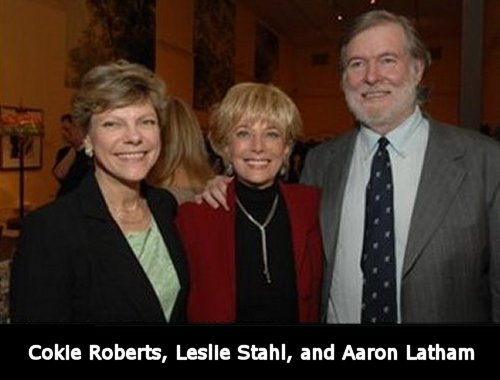 |
"Aaron,
get on a
plane and get your butt down to Houston pronto!"
Aaron Latham was a Washington DC resident
married to
long-time
60 Minutes correspondent Leslie Stahl. Although
Latham was born in West Texas, he went to college at Princeton.
After graduation, Latham remained on the East
Coast to begin his career. Latham had been Felker’s primary
Watergate reporter at New York magazine in the early Seventies.
Developing a close rapport, Latham and Felker became amigos. This was good
because Felker needed someone he could trust.
If one word of his Sequel plan leaked out, Robert Stigwood might cut him
off at the pass.
Aaron Latham had never heard of Gilley's, but that
didn't matter. Latham understood his mission.
Felker needed a country-western story pronto. It was
his job to cut and paste Nik Cohn's Disco story into the
C&W environment at
Gilley's and stick boots on it.
|
When Latham got to Houston,
Felker introduced him to Sherwood Cryer, co-owner of Gilley's
along with Mickey Gilley. As
the two men walked around the club, Cryer advised Latham on
various angles for the upcoming Esquire article.
Sherwood
Cryer had a big smile on his face. Cryer enjoyed walking
this stranger through the cavernous building because Felker
had confided in him. After swearing Cryer to secrecy,
Felker confessed he intended to make
Gilley's the C&W equivalent of Saturday Night
Fever. Based on that conversation, Cryer crossed his
fingers. It was crazy to believe, but if Felker's hype
was legitimate, Latham's story
might just put
Gilley's
on the national map.
During his tour of the club, Latham met some
interesting Gilley's
regulars including the colorful operator of the mechanical
bull. Unbeknownst to Latham at the time, the bull
operator was an escaped convict hiding in plain sight here at
the club. The convict somehow persuaded Latham into riding
the mechanical bull. Latham was a brave man.
Since beginners were sure to be thrown, it
took real guts to get up on that violent machine.
Sure enough,
Latham was quickly thrown off the bull. Now Latham
was hooked. Undeterred, he spent the rest of the
day trying to master the mechanical bull. Bruised,
beaten, sore all over, Latham laughed at how seriously he had
taken the challenge. He vowed to
make this mechanical beast the surprise star of his story.
Latham
hung around
Gilley's for a month. He
interviewed everyone in sight and
rode the bull every chance he got.
The more people he talked to, the more he realized many of
them had grown up in the Texas countryside just like he had.
They had moved to the big city to chase factory
jobs created by Houston's booming economy.
Most of these young men were chemical plant workers who
spent every spare evening trying to impress women by riding
the mechanical bull and looking for love on the dance floor.
Latham noticed the Gilley's regulars had brought their country ways with
them, boots, cowboy hats, trucks,
Wrangler jeans, and a love of country music. Indeed, these
young men were straddling two worlds. They had
one foot in the country and one foot in the city.
Latham smiled. He had his theme... these uprooted
kickers were Urban Cowboys.
Latham
fast-tracked the script that would give birth to Felker's
precious 'Sequel in Disguise'. Now it was time
for the Wizard of Oz to go to work. In September 1978,
a mere two and a half months after Felker's Gilley's
revelation, the
Ballad of the Urban Cowboy and America's Search for True Grit appeared in
Esquire. Surely this was the most pretentious
title in literary history, but so what. The important thing was
editor Felker had the good sense to place a powerful subtitle
on the cover of his magazine:
Saturday Night
Fever, Country-Western style
Clay
Felker's headline worked like a charm. The moment
Esquire published the story, he made a
phone call to the same guys at Paramount Pictures who had
released SNF. The moment the movie
moguls got the
hint 'Disguised Sequel',
they took the bait. Next came Irving Azoff,
business manager of the rock band Eagles.
He saw the chance to do for his
country music artists what Robert Stigwood had
done for
the Bee Gees. Azoff won the soundtrack bidding contest and began
producing Urban Cowboy.
Then came the
big scoop. In a blinding
stroke of good fortune (hint: Fate in Action), John Travolta was available.
The movie featured a
hard-hitting story of directionless youth
with John Travolta starring as the Dancing Cowboy. On
the verge of pulling off one of
history's great rip-offs,
Clay Felker's
Redemption was at hand.
|
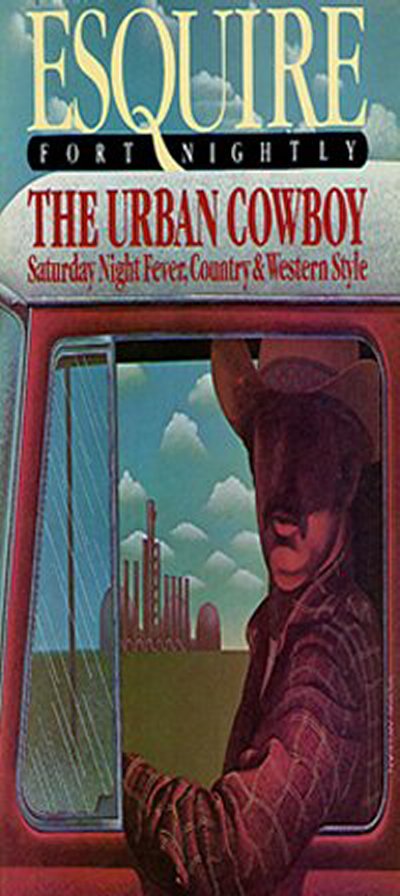 |
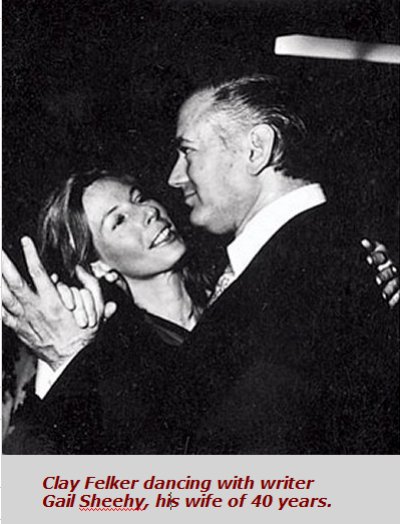 |
Rick Archer's Note:
In 1977 Clay
Felker was kicked to the curb by Rupert Murdoch. That
same year, Felker's wife Gail Sheehy wrote a tell-all
article about her husband's losing battle in Rolling Stone.
Ms. Sheehy concluded her story with this
observation:
A week after having his life kicked
apart, Clay awoke on a Caribbean island
with a shudder. He turned to me
and said, "I realize how fragile my life
is."
Clay rested against the headboard and
began reading the history of Napoleon
and Talleyrand.
However, he was actually deep in
thought.
I watched in sadness as my husband
fought the panic of age, fat, and
self-doubt.
What was he supposed to do now?
Would the stamina be there to start all
over again? Was there still time
to dream the great magazine of the
Eighties?
Ms. Sheehy
mentioned Felker's self-doubt. In
addition to his humiliation at the hands
of Rupert Murdoch, he had let himself be
taken advantage of by a hustler named
Nik Cohn. Clay Felker was the man
who prided himself in spotting trends
before all others. And yet the one
time his talent could have really paid
off, Felker missed it.
How on earth did
Felker miss this Disco
phenomenon? After all, wasn't he
supposed to be the Great Trend-spotter? The most
embarrassing part was knowing that Cohn
had placed the 'Disco Trend' right under his
nose. Did Felker pick up the
scent? No. All Felker had
done was sniff with contempt. Now
everyone around him was getting rich and
Felker had absolutely nothing to show
for it except humiliation.
|
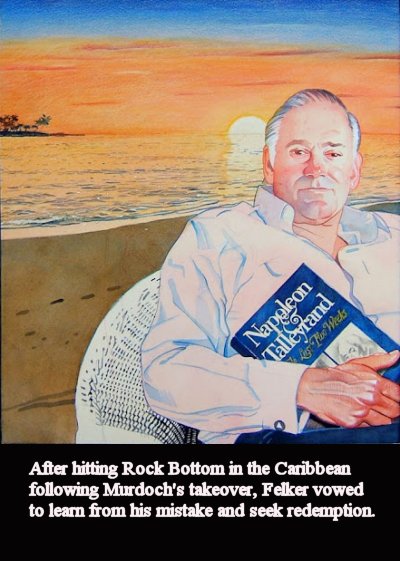 |
Looking at
things with Fate in mind, it strikes me that
Robert Stigwood and Clay Felker were on alternating
Brightest Day-Darkest Day cycles. Ironically, Felker's
plane touched down in Houston at virtually the same moment
as Stigwood's Sgt. Pepper's Lonely Hearts Club Band
was being released. When Stigwood's movie became one of the
great cinematic turkeys of all time, this led to a weird
seesaw-like coincidence where Stigwood's star fell at the
same time that Felker's rose.
On a personal note,
my Brightest Day coincided with Felker's
Darkest Day, the
Saturday Night Fever Era that
launched my career as a
Disco teacher. Now Felker's
Brightest Day as the Wizard of Oz led to my Darkest Day.
Felker's grand
scheme to steal Stigwood's precious
Saturday Night Fever sequel with
a copycat put a premature
end to my career as a Disco teacher. Very curious how
this seesaw effect works. Up-down, up-down.
In her
article about the battle for control of
New York magazine, Gail Sheehy
offered this insight.
"A week after having his life kicked
apart, Clay awoke on a Caribbean island
with a shudder. He turned to me
and said, "I realize how fragile my life
is."
Clay rested against the headboard and
began reading the history of Napoleon
and Talleyrand."
I was curious about the book, so I looked
it up. Talleyrand was Napoleon's
Foreign Minister. In the beginning
Talleyrand helped Napoleon consolidate his
power. Their relationship deteriorated
when Talleyrand began to disagree with
Napoleon's aggressive military campaigns.
Unable to persuade Napoleon to cease fire,
Talleyrand betrayed him by secretly working
to secure the Emperor's overthrow.
Considering the story of Felker's downfall
involved Murdoch secretly working behind the
scenes to secure the editor's overthrow, it
becomes obvious why Felker was drawn to this
particular book.
He was already plotting his revenge.
|
|
|
|